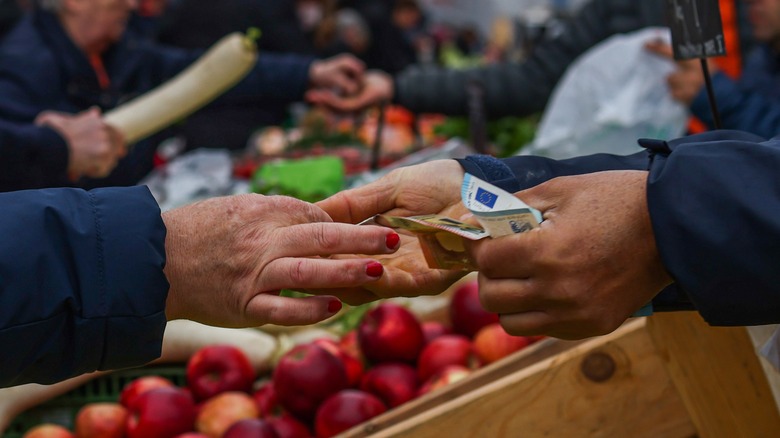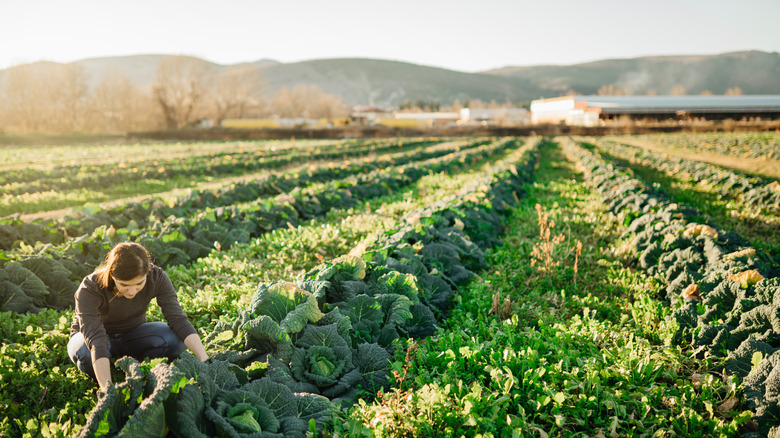Why Local Foods Are Sometimes Pricier Than Commercially Grown
Local food systems do a lot of good for your community. They're the reason for your afternoons spent at the farmers market, indulging in freshly baked breads and seasonal produce, for one. But they're also a means of economic localization and circulation. One 2022 study published in Sustainability found that, when you spend your money shopping from local food suppliers, it actually multiplies — contributing to increased employment and income rates in your community.
Another report from Michigan State Univeristy's Center for Community and Economic Development found that local food systems don't only provide jobs to people in your local area, but they're also more likely to filter their incomes back into the community, furthering their support of the regional economy. However, much like the terms "natural" and "superfood," the word "local" has been proudly touted across food labels and packaging without any official definition (per The National Agricultural Law Center).
The lack of regulations and official characterizations of local food systems has allowed the growing trend to become more of a marketing term. In some cases, the word "local" might grant a higher purchase price than if it were commercially grown, no matter if it was sourced from further away. This is why The National Agricultural Law Center recommends buying food from direct-to-consumer outlets, such as your local farmers market or food co-op. At least there, if the food does happen to be more expensive, it'll be for a legitimate reason.
Specialized farming methods
Even though shopping locally cuts out a big middleman, The National Agricultural Law Center recognizes that it's not always cheaper. In most cases, the food from your local, small-scale producers will cost the same if not more than those that were grown commercially. But, that's not always because they're capitalizing on the trendiness of their "local" label. More often than not, local food systems are utilizing special methods of food production like organic or regenerative agriculture. Foods that are grown through farming methods like these inevitably cost more because of the associated production costs — but it's not for nothing.
Organic and regenerative agriculture are just a couple of examples of the sustainable farming practices that local food systems utilize. Through them, a report from the Rodale Institute shows that the small-scale producers in your area are maintaining the biodiversity, protecting the natural pollinators, and promoting clean air, water, and soil in your local area — all things that will preserve the farmland and ensure food security in your community for generations to come. And, should you ever find yourself questioning whether or not shopping local is worth the price, just look at the state of Hawaii's agriculture and you'll be convinced.

